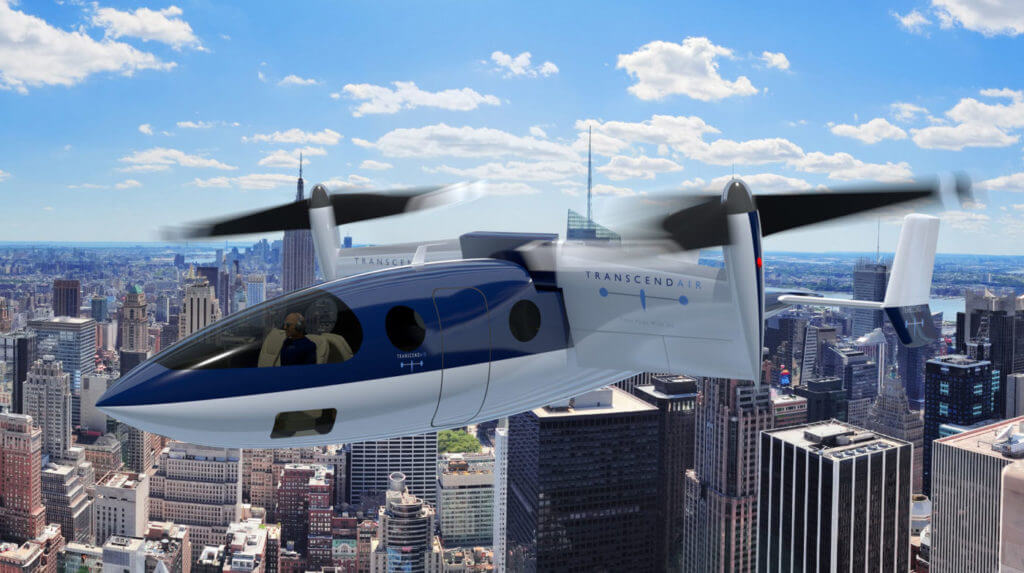BRS Aerospace (BRS), a whole aircraft rescue parachute system manufacturer, and Transcend Air Corporation (Transcend Air) — developer of the Vy 400, a six-seat, vertical take-off and landing (VTOL) aircraft — announced a partnership to make the Vy the safest VTOL aircraft in history.

“BRS Aerospace is committed to continually advancing the cause of aircraft occupant safety,” said Fernando de Caralt, CEO of BRS. “We look forward to working with Transcend Air to create one of the first aircraft to integrate our proven whole-airframe parachute system with today’s technological advancements in automotive industry occupant protection.”
“BRS was one of the very first companies we approached when doing the initial conceptual design of the Vy 400,” said Gregory Bruell, chief executive officer of Transcend Air. “We are committed to making the Vy family as safe as possible, so this collaboration means not just installing a BRS parachute but driving the whole design from an occupant protection standpoint.”
Transcend Air and BRS expect to go beyond the occupant protection requirements of the current Part 23, Part 25 and Part 27 Federal Aviation Administration (FAA) aircraft certification regulations. Building on the proven benefits of the BRS system, the two companies will apply techniques pioneered by automotive manufacturers that have cut injury rates in half since 1985. The impact energy — already tremendously reduced via parachute descent — will be further absorbed and dissipated through the integrated use of frangible aircraft structure, safely deforming seat supports, and airbags.
BRS’ current whole aircraft parachute system for fixed-wing aircraft design calls for a parachute ballistic launcher to be installed in the aircraft with either a pilot-initiated activator located in the cockpit or an automated activation system. Upon activation, a ballistic rocket propels a parachute into the airstream to slow the airplane and float it down into a survivable vertical landing.









